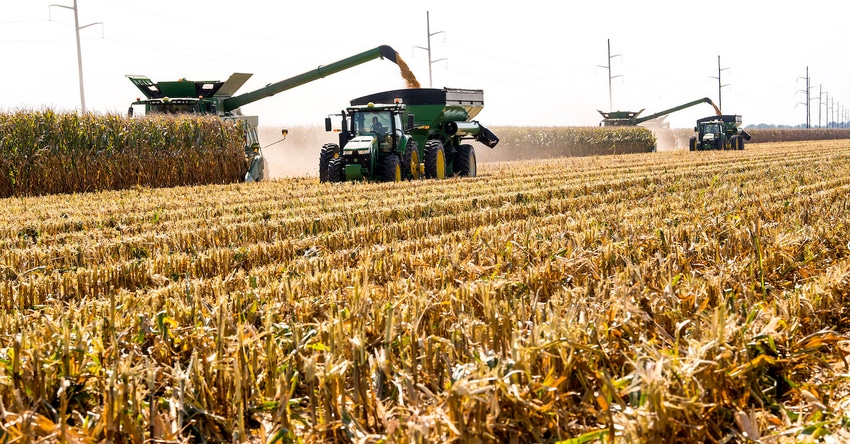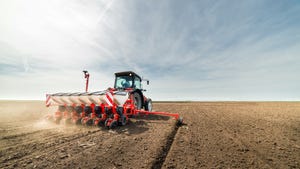April 11, 2022

As fertilizer prices soar, farmers are looking for places to cut costs, and potassium is often at the top of that list. Arkansas Agricultural Experiment Station experts caution growers to choose their cuts carefully and offer a toolkit to help make those decisions easier and more cost effective.
Market mayhem
“Fertilizer prices soared in 2021 and more than doubled in the last 12 to 18 months,” said Trent Roberts, associate professor of soil fertility and testing for the Arkansas Agricultural Experiment Station, the research arm of the University of Arkansas System Division of Agriculture.
John Anderson, head of the department of agricultural economics and agribusiness, said the cost of potash — the common fertilizer source for potassium — costs a little over $800 per ton now, up from $375 per ton a year ago. Other fertilizers are similarly high, with urea, a primary nitrogen source in Arkansas, around $900 per ton, up from less than $400 per ton a year ago.
While fertilizer costs are rising, crop prices are also high, Anderson said. At the end of March, rice futures were trading around $16 per hundredweight. September corn was going for $6.74 per bushel, December cotton at $1.12 per pound and September soybeans were over $15 per bushel.
“These are the best prices we’ve seen on our crops in 10 years,” Anderson said.
But Roberts said producers are wondering if crop prices will keep up with fertilizer prices and other input costs.
Tough decisions
Michael Popp, professor of agricultural economics and agribusiness for the Agricultural Experiment Station, said, “When crop and fertilizer price both go up, deciding what to cut back and how much is not a straightforward matter.”
Traditional fertilizer recommendations are aimed at maximizing yield, Popp said. But maximum yield is not always the same thing as maximum profit.
“Maximum profit is driven by agronomic response to fertilizer, soil test potassium, price for the crop and the cost of fertilizer,” Popp said. The four must be considered together, he said, and determining what potash rate maximizes profit is a complex calculation.
Popp, in collaboration with Roberts and Nathan Slaton, associate vice president for agriculture and assistant director of the Arkansas Agricultural Experiment Station, has developed a series of decision-making tools to make crop management easier. The newest of these is an updated potassium fertilizer rate calculator that helps growers make decisions for corn and cotton in addition to rice and soybeans.
The new tool, PRC for Potash Rate Calculators, joins a lineup of Decision Support Software available from the Agricultural Experiment Station. The Excel-based tools can be downloaded free at https://bit.ly/AAES-DecisionTools.
Once downloaded and installed on a Windows PC, Popp said growers can input soil test results, potash costs, crop prices and anticipated yield. “The program offers a profit-maximizing fertilizer rate.”
By changing input values, Popp said, growers can explore the impacts of cutting back their potash application rates and decide where the best savings to profit ratio will be for their crop, or even the impact of not using potassium. “It took me two minutes to figure out the most profitable application rate for soybeans,” he said.
“I like to use the tool at the field level,” Roberts said, explaining that its recommendations can be tailored for specific conditions in each field. “Its scalability is so useful and allows producers to tailor their potash rate to their specific farm based on what their costs will be.”
All Arkansas Extension row crop specialists and county agricultural agents are trained on the decision tools and can help growers with questions and to learn to use them, Roberts said.
Nutrient value
Roberts said the Potash Rate Calculators are important because growers tend to underestimate the importance of potassium as a crop nutrient. Nitrogen tends to get top billing for most crops other than soybeans, followed by phosphorus. When farmers are looking for a place to cut costs, they eye potassium.
But potassium contributes to the efficiency with which plants use other nutrients, Roberts said. A tool like PRC helps farmers make informed decisions on where they can afford to cut expenses.
“Good data is key to getting the best information from any of these decision tools,” Roberts said. “Soil testing is the foundation of any fertilizer management decision, and these tools are based on it.” He added that getting quality soil samples is essential for getting good results.
Growers can learn how to collect good samples from their county extension agents. The county offices can submit those samples to the Agricultural Experiment Station’s Soil Testing Lab.
Bottom line
Roberts advises growers to avoid making emotional decisions on the farm.
“It’s easy to get overwhelmed by price changes, availability of inputs and all the things they have to consider,” Roberts said. “Use these tools coupled with the information you have at your disposal and don’t let emotions guide your decisions. Let the data tell you what to do.”
Popp, Roberts and Anderson discuss the Potash Rate Calculators, the confluence of high fertilizer and crop prices and the importance of potassium fertilizer in a podcast co-produced by the Fryar Price Risk Management Center of Excellence and the Division of Agriculture’s Row Crops Radio. The podcast can be heard at https://bit.ly/AAES-RelevantRisk-K.
Source: University of Arkansas System Division of Agriculture which is solely responsible for the information provided and is wholly owned by the source. Informa Business Media and all its subsidiaries are not responsible for any of the content contained in this information asset.
You May Also Like




